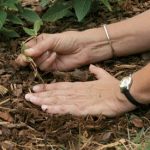Transform your lawn into a lush, verdant paradise with Erbert Lawns guide to lawn overseeding. Discover when and how to rejuvenate your turf for optimal growth and enduring beauty. Lawn overseeding is a quintessential step in lawn care, particularly for maintaining a robust and healthy turf. It’s an effective way to infuse new life into tired or thinning grass. Here, we delve into the art and science of overseeding, outlining the best time for this process and providing a step-by-step guide to ensure success. Whether you’re a seasoned gardener or new to lawn care, this guide will help you achieve a vibrant, dense lawn that’s the envy of your neighborhood.
- When to Overseed Your Lawn
- How to Overseed Your Lawn
- Additional Tips
- Understanding Your Lawn's Needs
- Step-By-Step Guide to Lawn Overseeding
- Overcoming Common Challenges
- Enhancing Lawn Resilience
- The Role of Professional Lawn Care
- Sustainable Lawn Care Practices
- Advanced Techniques for Lawn Improvement
- Conclusion
- Frequently Asked Question
When to Overseed Your Lawn
- Seasonal Timing: The prime time for overseeding is typically during early fall or spring. These seasons offer moderate temperatures and ample rainfall, creating ideal conditions for seed germination and growth.
- Evaluating Lawn Health: Overseed when your lawn starts showing signs of wear, thinning, or patchiness. This can rejuvenate your grass and improve its resilience against pests and diseases.
How to Overseed Your Lawn
- Choose the Right Seed: Select a grass seed that matches your current lawn and local climate. Research to find the best fit or consult a professional.
- Prepare the Lawn: Mow your lawn to a low height and remove clippings to allow seeds to reach the soil easily.
- Seed Application: Spread the seed evenly across your lawn, either by hand or using a spreader.
- Watering and Maintenance: Keep the soil consistently moist but not waterlogged. Reduce foot traffic on the newly seeded areas to ensure proper growth. Visit our blogfor more detailed information.
Additional Tips
Soil Testing: Consider soil testing to determine if any amendments are needed for optimal growth.
Fertilization: Apply a starter fertilizer to provide essential nutrients for young grass.
Understanding Your Lawn’s Needs
Before you begin overseeding, it’s crucial to understand the specific needs of your lawn. Different types of grass require different care, and knowing what you’re working with is key. For instance, cool-season grasses like Kentucky bluegrass or fescue thrive in northern climates, while warm-season grasses like Bermuda or Zoysia are more suited to southern regions. For more detailed information on different grass types and their specific needs, consider checking this comprehensive guide from Turfgrass Producers International.
Step-By-Step Guide to Lawn Overseeding
Step 1: Lawn Assessment
Thatch and Soil Compaction: Check for thatch buildup and soil compaction. These can impede seed germination and growth. Aerating your lawn can be beneficial in such cases.
Step 2: Selection of Grass Seed
- Matching with Existing Turf: Ensure the new grass seed blends well with your existing turf. This uniformity is crucial for aesthetic and health reasons.
Step 3: Preparation for Overseeding
- Aeration: If the soil is compacted, aerating your lawn before overseeding can help. This process creates small holes in the soil, allowing air, water, and nutrients to reach the grass roots more effectively.
- Soil Amendments: Based on the results of your soil test, you may need to apply soil amendments to balance pH levels or enrich the soil with nutrients.
Step 4: Applying The Seed
- Spreading Techniques: Use a broadcast spreader for even distribution of seeds. For smaller areas, hand spreading can be effective.
- Seed-to-Soil Contact: Rake the area lightly after spreading the seed to ensure good seed-to-soil contact, which is crucial for germination.
Step 5: Post-Overseeding Care
- Watering: Initially, water the overseeded areas lightly but frequently to maintain moisture. As the seeds germinate and grass begins to grow, gradually reduce watering frequency but increase the amount of water to encourage deeper root growth.
- Mowing: Avoid mowing the lawn until the new grass is at least 3 inches tall. This gives the young grass time to establish itself.
- Fertilizing: About four to six weeks after overseeding, apply a high-nitrogen fertilizer to support growth.
Overcoming Common Challenges
- Weed Management
- Pre-Overseeding: Address any weed problems before overseeding. This might involve applying a pre-emergent herbicide or manual removal.
- Post-Overseeding: Once the new grass has established, use appropriate weed control methods to maintain lawn health.
- Pest and Disease Control
- Regular Monitoring: Keep an eye out for signs of pests or diseases. Early detection is key to preventing major damage.
- Integrated Pest Management: Implementing an integrated pest management (IPM) approach can help manage pests in an environmentally friendly way.
Enhancing Lawn Resilience
- Diversity in Grass Varieties
Mix of Varieties: Consider using a mix of grass varieties in your overseeding process. This can increase your lawn’s resilience to various environmental stresses.
- Regular Lawn Maintenance
- Regular Care: Regular mowing, watering, and fertilizing can significantly improve your lawn’s health and ability to withstand stresses.
- Seasonal Adjustments: Adjust your lawn care practices with the changing seasons to ensure your lawn gets what it needs throughout the year.
The Role of Professional Lawn Care
While DIY lawn overseeding is achievable, there’s undeniable value in professional lawn care services. Experts like those at Erbert Lawns bring extensive knowledge and experience, ensuring that your lawn receives the best care possible. They can provide tailored advice and services, from selecting the right grass seed to managing pests and diseases.
Sustainable Lawn Care Practices
- Environmental Considerations
- Eco-Friendly Products: Choose organic or environmentally friendly fertilizers and pest control products for a greener approach to lawn care. These products are not only gentle on your lawn but also on the environment. For an extensive range of eco-friendly lawn care products, check out The Environmental Working Group which offers insights and recommendations on sustainable products.
- Water Conservation: Implement watering practices that conserve water, like watering early in the morning to reduce evaporation.
- Supporting Local Ecosystems
- Native Plants: Incorporating native plants into your landscape is not only aesthetically pleasing but also environmentally beneficial. Native plants are well-adapted to local conditions, requiring less water, fewer fertilizers, and minimal care compared to non-native species. They play a crucial role in supporting local wildlife, including pollinators like bees and butterflies. For more information on native plants and their benefits, visit the Lady Bird Johnson Wildflower Center, a trusted resource for native plant information.
Advanced Techniques for Lawn Improvement
Microclover Integration
- Benefits of Microclover: Adding microclover to your lawn can improve soil health, reduce the need for fertilizers, and enhance the greenness of your lawn.
Grass Cycling
- Recycling Grass Clippings: Leaving grass clippings on the lawn after mowing can provide a natural source of nutrients.
Conclusion
Overseeding is a valuable technique for maintaining a lush, healthy lawn. By choosing the right time and following these steps, you can ensure successful germination and growth. For more guidance or professional services, reach out to Erbert Lawns, where our experts are ready to help you achieve the lawn of your dreams.
Frequently Asked Question
Q1. What is the best time of year to overseed a lawn?
The ideal time for overseeding is early fall or spring when the temperatures are moderate and there’s ample rainfall.
Q2. How often should I water my overseeded lawn?
Keep the soil consistently moist but not waterlogged, especially during the first few weeks after overseeding.
Q3. Do I need to mow my lawn before overseeding?
Yes, mowing your lawn to a low height before overseeding helps the seeds reach the soil more easily.
Q4. How do I choose the right type of grass seed?
Select a seed that matches your current lawn and local climate. Consider consulting with lawn care professionals for advice.
Q5. Can I overseed a lawn with existing weeds?
It’s best to address weed issues before overseeding to give the new grass the best chance to thrive.
Q6. Is soil testing necessary before overseeding?
While not always necessary, soil testing can be beneficial to determine if any amendments are needed for optimal grass growth.










